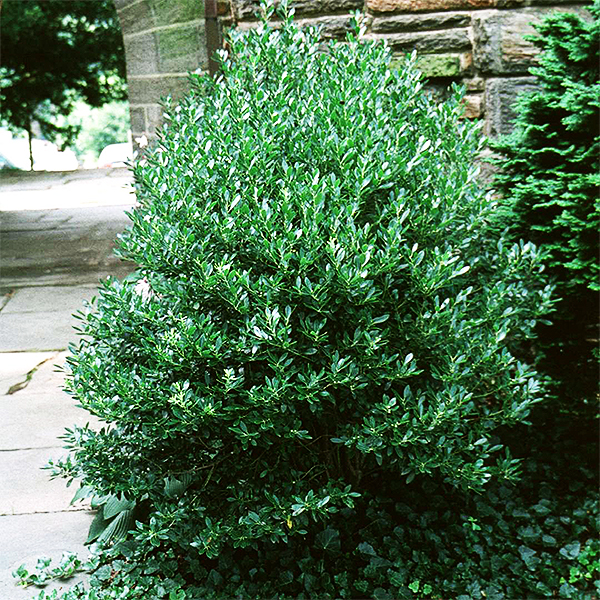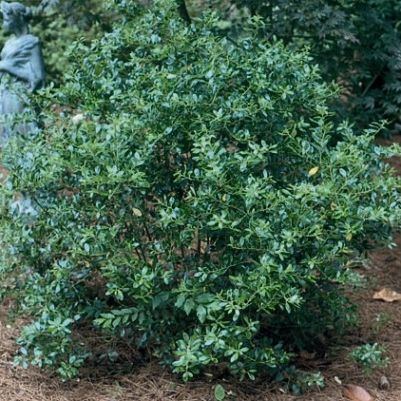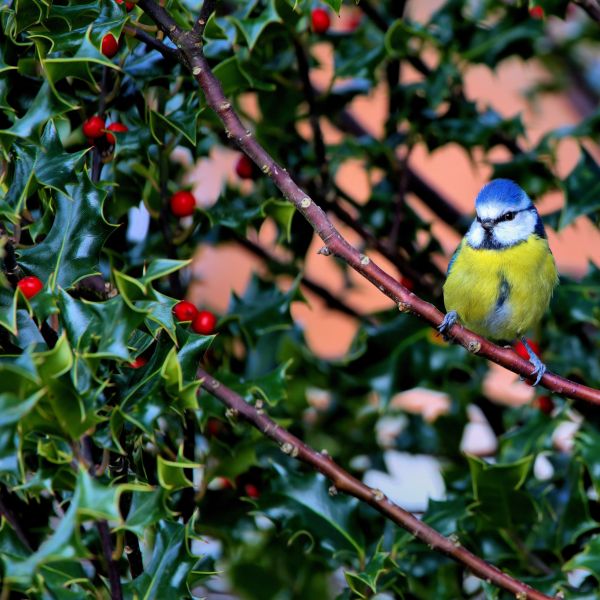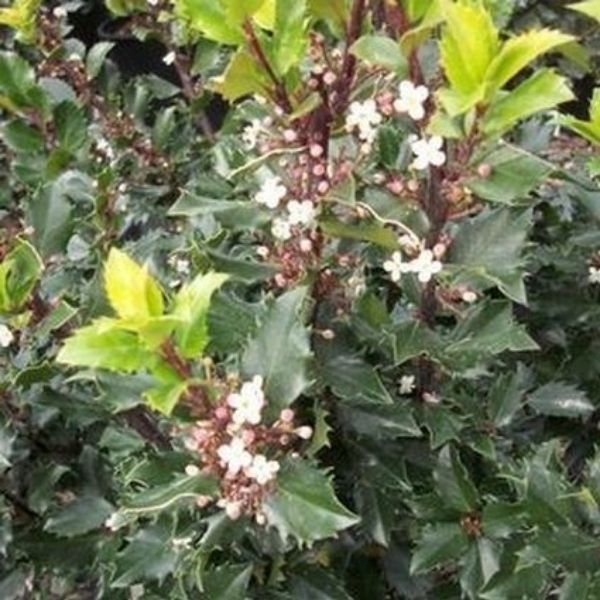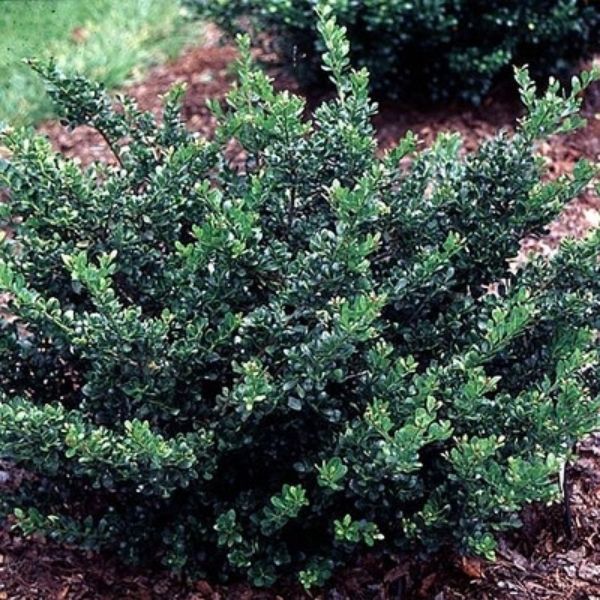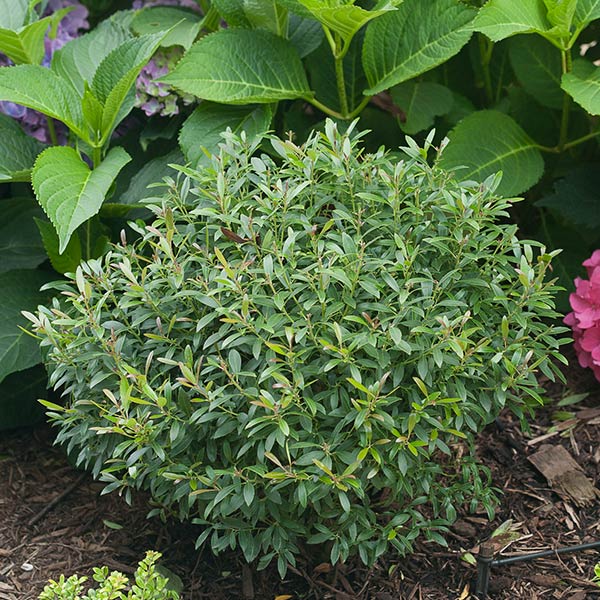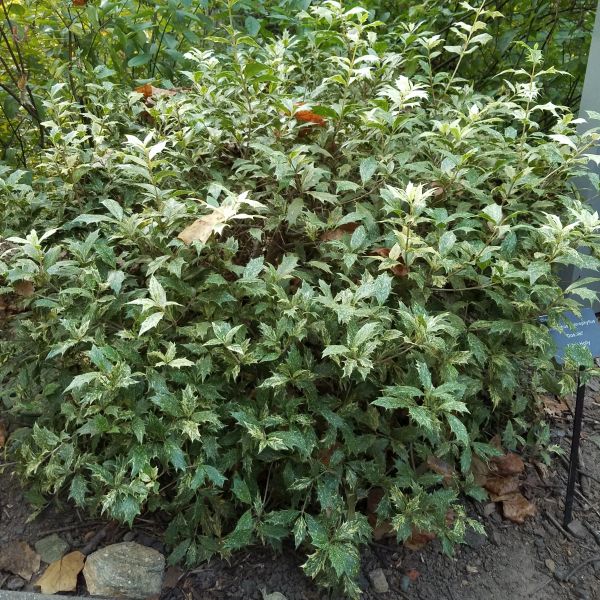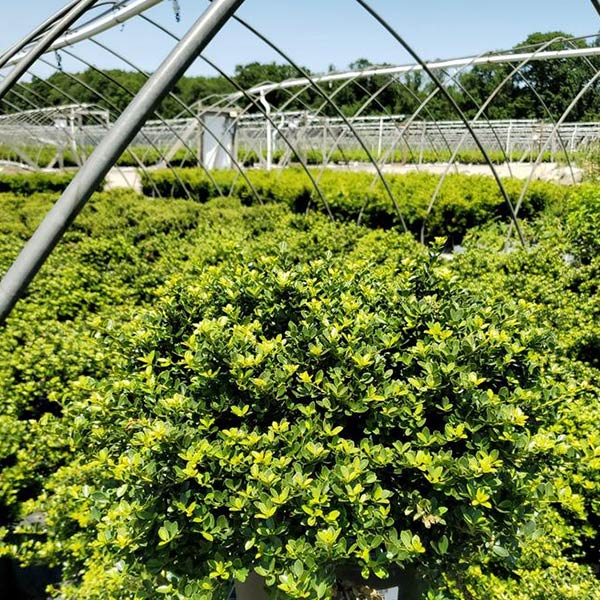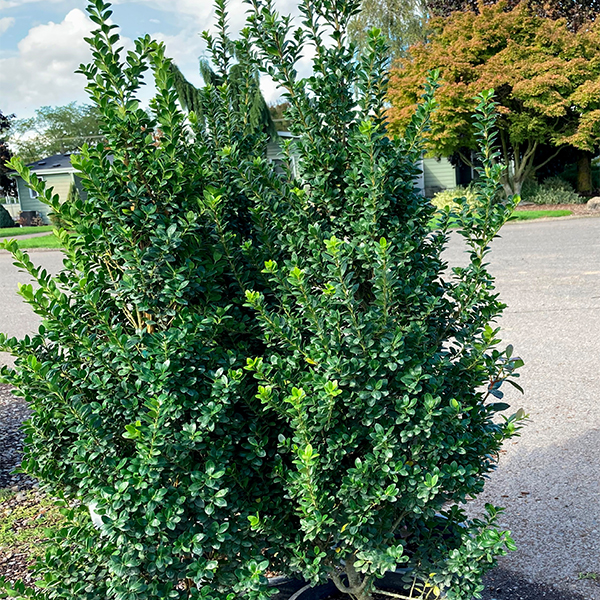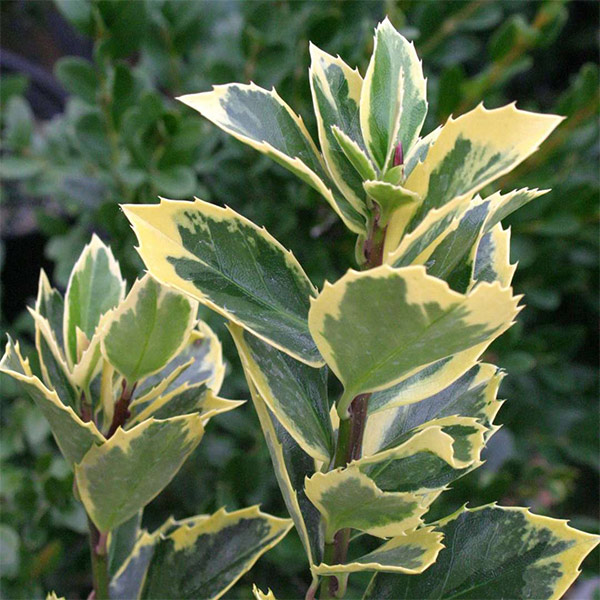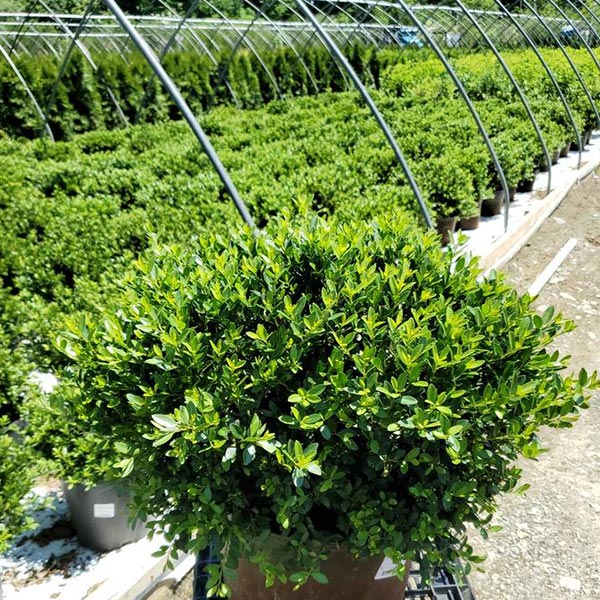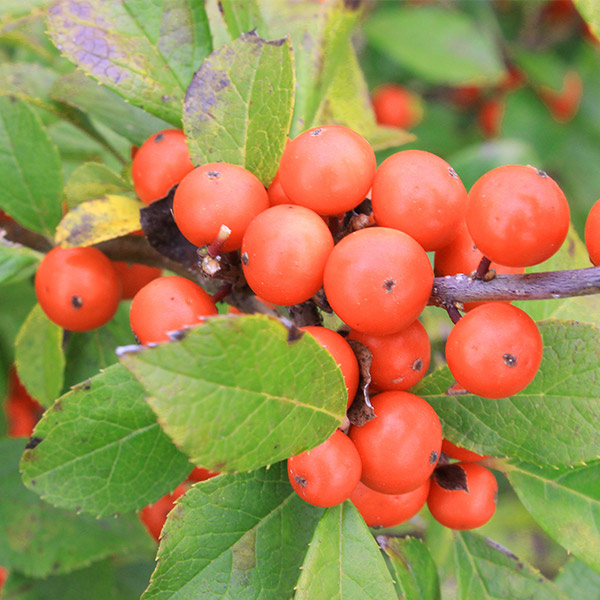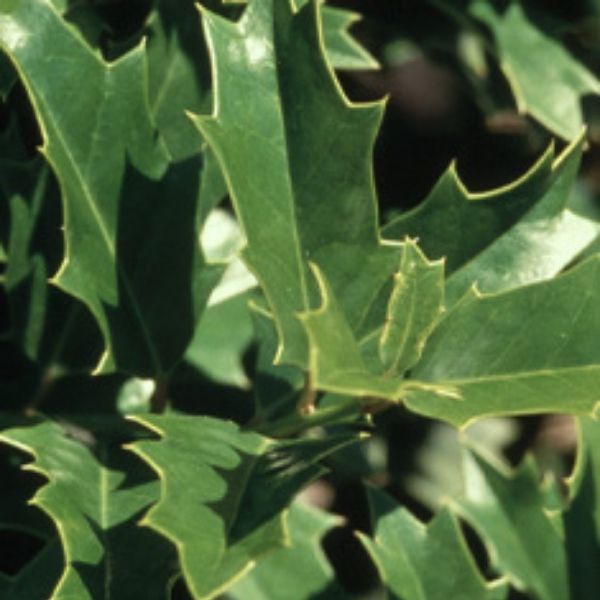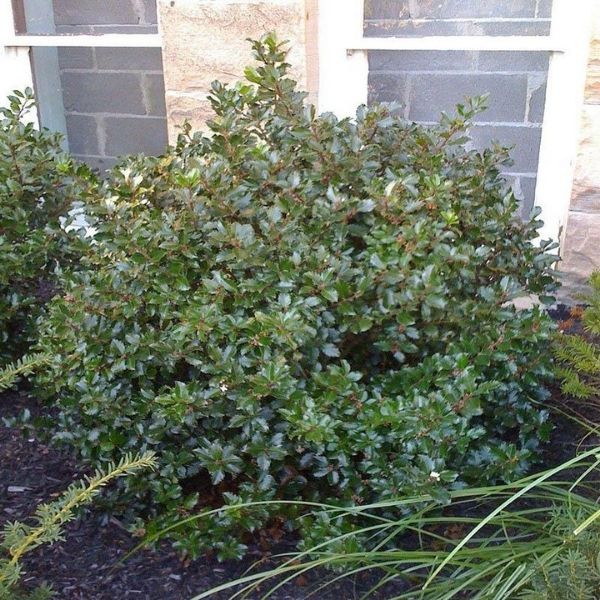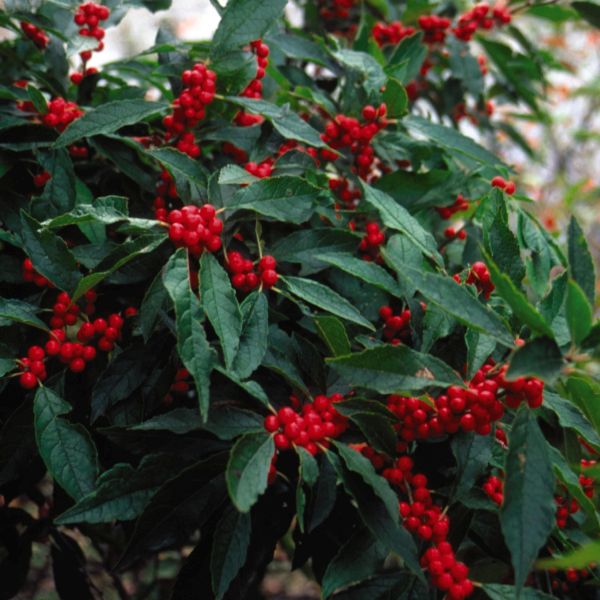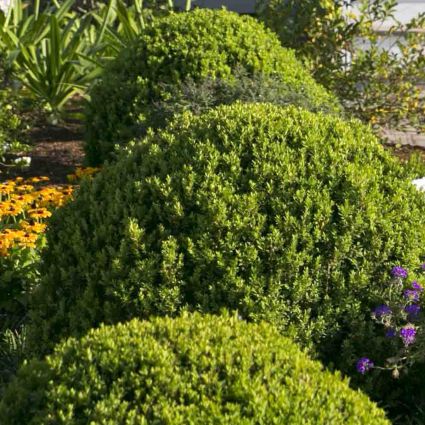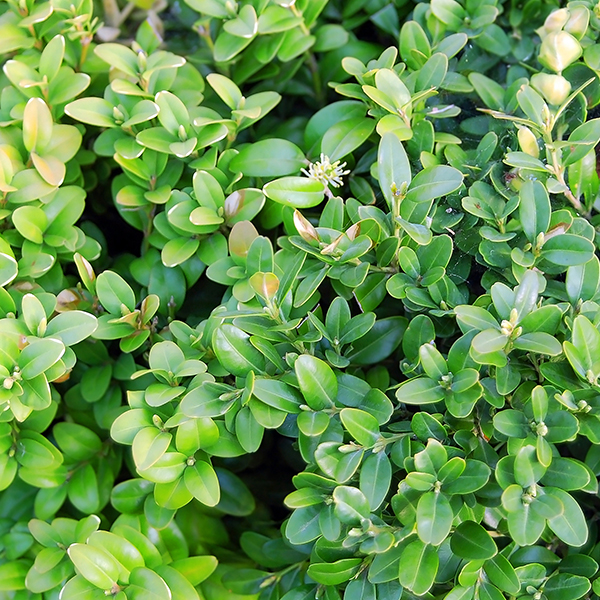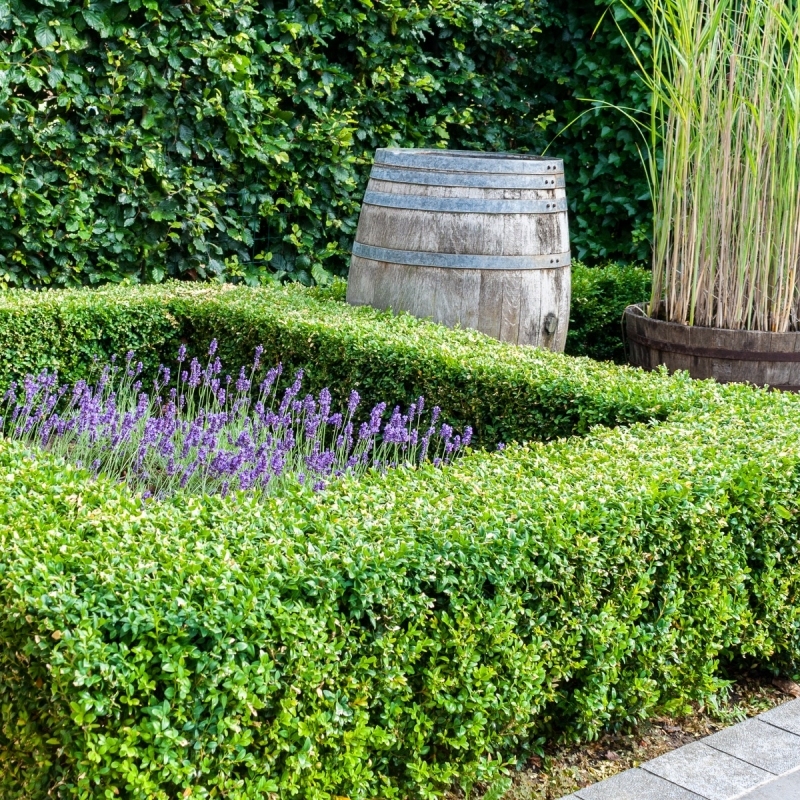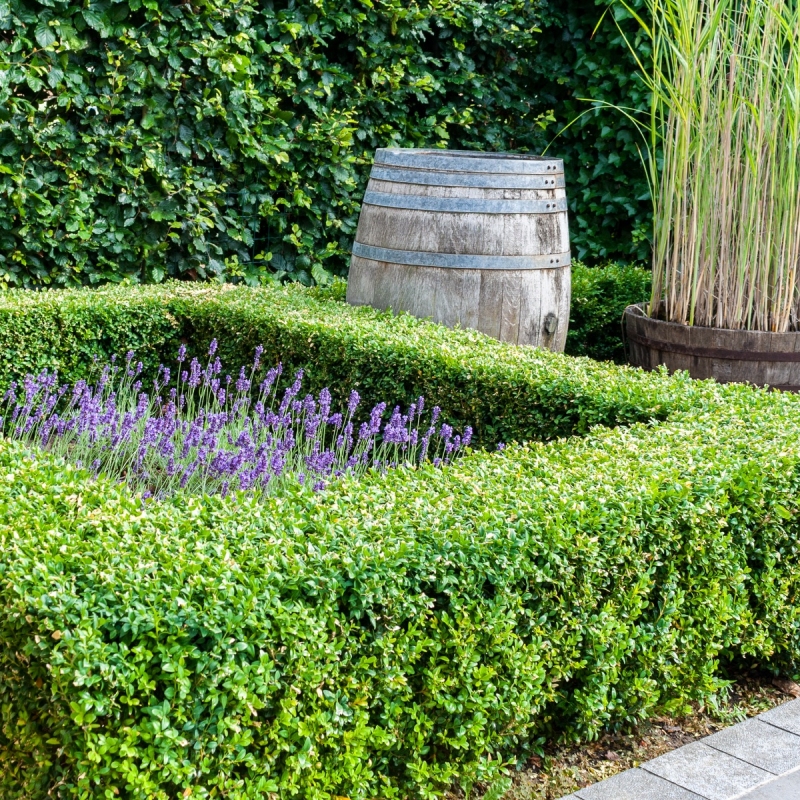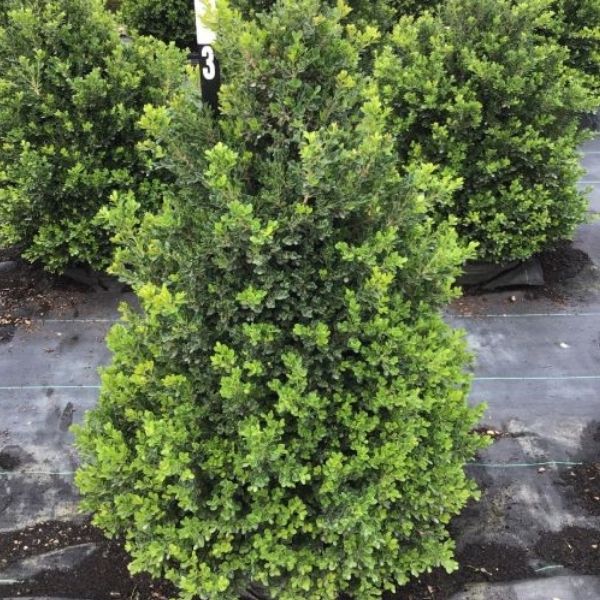Densa Inkberry Holly
Ilex glabra 'Densa'
11 reviews
Densa Inkberry Holly
Ilex glabra 'Densa'
11 reviews
- Compact evergreen shrub with glossy, dark green foliage
- Resistant to deer and rabbits
- Produces small white flowers in spring followed by black berries in fall
- Ships in 3 to 7 days
- Free Shipping Over $150
- Plant Arrival Guarantee
- In Stock
$107.00
$117.7
10% Off
2.5 Gallon
Why Densa Inkberry Holly?
Densa Inkberry Holly (Ilex glabra 'Densa') is a compact evergreen shrub that grows well in a variety of conditions. It is prized for its dense, glossy foliage and its ability to tolerate both sun and shade. This holly produces small, black berries in the fall and provides year-round interest in the garden. With its low-maintenance nature and ornamental value, Densa Inkberry Holly is a popular choice for landscapes.
People who loved this plant also bought
Sunlight
Densa Inkberry Holly prefers full sun to partial shade, meaning it requires at least 6-8 hours of direct sunlight per day to thrive.
Watering
Densa Inkberry Holly has a moderate watering requirement. It thrives in moist soil conditions but can tolerate periods of drought once established. Regular watering is needed during dry spells to maintain its health and vigor.
Fertilizing
The fertilizer requirement for Densa Inkberry Holly is a balanced fertilizer with a slow-release formula that contains nitrogen, phosphorus, and potassium.
Densa Inkberry Holly (Ilex glabra 'Densa')
The Densa Inkberry Holly, scientifically known as Ilex glabra 'Densa', is an evergreen shrub that belongs to the Aquifoliaceae family. It is characterized by its dense, compact growth habit and glossy dark green foliage, making it an excellent choice for hedges, foundation plantings, and borders.
Features:
- Foliage: The leaves are small, oval-shaped, leathery, and have a lustrous appearance. They are dark green throughout the year, providing a beautiful backdrop for other plants.
- Growth habit: This shrub has a dense, rounded form, reaching a height and width of about 3-4 feet (91-122 cm). It grows slowly but steadily, ensuring minimal maintenance requirements.
- Berries: Female plants produce tiny black berries, which persist throughout the winter. These berries are a valuable food source for birds and wildlife, adding additional ornamental interest to the landscape.
- Adaptability: Densa Inkberry Holly is highly adaptable to various soil types and pH levels, including clay and wet soils. It is also tolerant of salt spray, making it suitable for coastal gardens.
- Light requirements: This holly thrives in full sun to partial shade. It can tolerate some shade but may have reduced berry production in shadier locations.
- Hardiness: It is a cold-hardy shrub, with the ability to withstand temperatures down to USDA zones 5-9.
Uses:
The compact size and attractive foliage of Densa Inkberry Holly make it a versatile shrub that can be used in various ways:
- Hedges: It forms a dense evergreen hedge that provides privacy and acts as a sound barrier when planted in rows.
- Foundation plantings: The compact growth and glossy foliage make it an excellent choice for planting near building foundations, where it adds structure and year-round interest.
- Borders and mass plantings: The dense habit of this shrub allows it to create attractive borders, especially when planted in groups. It can also be used to fill empty spaces in garden beds.
- Wildlife gardens: The berries produced by female plants attract birds and wildlife, making it a valuable addition to wildlife gardens or naturalistic landscapes.
Note: To achieve maximum berry production, it is necessary to have both male and female plants in the vicinity for cross-pollination. Male pollinator cultivars, such as 'Malepoll' or 'Jim Dandy', can be planted alongside for this purpose.
Care:
To ensure the health and vigor of Densa Inkberry Holly, follow these care guidelines:
- Watering: Keep the soil evenly moist, especially during hot and dry periods. Provide about 1 inch of water per week, either through rainfall or irrigation.
- Pruning: Minimal pruning is required, but it can be done in late winter or early spring to shape the shrub. Remove any dead, damaged, or crossing branches to promote airflow and maintain its attractive form.
- Fertilization: Apply a balanced slow-release fertilizer in spring, following the manufacturer's instructions. This will provide essential nutrients for healthy growth.
- Pests and diseases: Densa Inkberry Holly is generally resistant to pests and diseases. However, occasional issues with scale insects or leaf spot may occur. Monitor the shrub regularly and take appropriate measures if needed.
The Densa Inkberry Holly is a low-maintenance evergreen shrub that offers a plethora of ornamental features to enhance any landscape. Whether used as a hedge, foundation planting, or part of a wildlife garden, this resilient shrub is sure to impress with its glossy foliage and abundant berries.
Plant Information:
| Botanical Name: | Ilex glabra 'Densa' |
| USDA Zones: | 5-9 |
| Water: | Moderate |
| Exposure: | Full Sun |
| Soil Needs: | Adaptable to Most Soils |
| Mature Height: | 4 - 7 feet |
| Mature Spread: | 4 - 7 feet |






Pollination Info
Pollination Information for Densa Inkberry Holly (Ilex glabra 'Densa')
The Densa Inkberry Holly (Ilex glabra 'Densa') is a versatile evergreen shrub known for its compact growth and glossy black berries. It belongs to the holly family, Aquifoliaceae, and is native to the eastern United States. Pollination Requirements: Unlike many other holly species, the Densa Inkberry Holly is self-fertile, meaning it can produce berries without needing a separate male plant for pollination. It has perfect flowers, which means they contain both male and female parts, allowing for self-pollination. Pollination Method: The Densa Inkberry Holly is primarily pollinated by bees, including various native bee species and honeybees. These insects are attracted to the flowers' nectar and inadvertently transfer pollen from the male parts (anthers) to the female parts (stigmas) of the same flower or other nearby flowers. Flowering and Berry Production: The Densa Inkberry Holly typically flowers in late spring to early summer, usually in May or June. The small white or cream-colored flowers are clustered on the branches and have a pleasant scent, attracting pollinators. Once pollinated, the flowers give way to green berries, which turn black as they mature. Benefits of Pollination: Pollination ensures the production of berries, which are a valuable food source for wildlife. The black berries of the Densa Inkberry Holly persist through winter, providing sustenance for birds, such as robins, cedar waxwings, and thrushes. Additionally, the flowers contribute to the overall beauty and aesthetics of the plant. Pollination Tips: To enhance pollination and berry production in your Densa Inkberry Holly:
- Plant multiple Densa Inkberry Holly shrubs close together to promote cross-pollination, although it is not necessary for fruit production.
- Ensure the presence of bee-friendly flowers in your garden to attract pollinators.
- Avoid using pesticides during the flowering period, as they may harm pollinating insects.
- Provide adequate sunlight and regular watering to maintain a healthy plant, as this can positively influence flower and berry production.
FAQ
Frequently Asked Questions about Densa Inkberry Holly (Ilex glabra 'Densa')
1. What is Densa Inkberry Holly?
Densa Inkberry Holly (Ilex glabra 'Densa') is an evergreen shrub that is native to the eastern United States. It is loved for its dense, compact growth habit and glossy foliage. It belongs to the holly family and produces small black berries in the winter.
2. How tall and wide does Densa Inkberry Holly grow?
Densa Inkberry Holly typically grows to a height of 4-6 feet (1.2-1.8 meters) and has a spread of 4-5 feet (1.2-1.5 meters). It is a slow-growing shrub that can eventually form a rounded shape.
3. What are the ideal growing conditions for Densa Inkberry Holly?
This holly variety thrives in well-drained soil that is slightly acidic to neutral. It prefers full sun to partial shade, but can tolerate some shade. Densa Inkberry Holly is also known for its excellent salt tolerance, making it suitable for coastal areas.
4. How should I plant Densa Inkberry Holly?
When planting Densa Inkberry Holly, dig a hole slightly larger than the root ball. Make sure the top of the root ball is level with or slightly above the ground. Backfill the hole with soil, gently firming it around the roots. Water thoroughly after planting and apply a layer of mulch to retain moisture.
5. Does Densa Inkberry Holly require pruning?
Densa Inkberry Holly is a low-maintenance shrub that generally doesn't require heavy pruning. However, light pruning can be done in late winter or early spring to maintain its shape and remove any dead or damaged branches. Avoid pruning too late in the growing season as it may interfere with the next year's flower and berry production.
6. How often should I water Densa Inkberry Holly?
While Densa Inkberry Holly is relatively drought-tolerant once established, it is important to water it regularly during the first year after planting to help its roots establish. Water deeply once or twice a week during dry periods. Afterwards, it only requires supplemental watering during prolonged dry spells.
7. Does Densa Inkberry Holly attract wildlife?
Yes, Densa Inkberry Holly's berries attract birds, butterflies, and other wildlife. The berries serve as an important food source during the winter months when other food may be scarce. This makes it a great addition to wildlife gardens or naturalized areas.
8. Are there any specific pests or diseases that affect Densa Inkberry Holly?
Densa Inkberry Holly is generally resistant to pests and diseases. However, it may occasionally encounter issues such as leaf spot, holly leaf miner, or scale insects. Ensuring proper watering, good air circulation, and maintaining overall plant health can help minimize such problems.
9. Can Densa Inkberry Holly be used for landscaping or hedging?
Yes, Densa Inkberry Holly is an excellent choice for landscaping, particularly as a low hedge or border plant due to its dense growth habit. It can also be used for mass planting, foundation planting, or as a specimen in gardens and landscapes.
10. When do the berries of Densa Inkberry Holly appear?
The black berries of Densa Inkberry Holly start to appear in late summer and persist through the fall and winter months. They provide a splash of color against the dark green foliage, adding visual interest to the landscape.
Planting & Care
Planting & Care for Densa Inkberry Holly (Ilex glabra 'Densa')
Planting
- Choose a planting location that receives full sun to partial shade.
- Ensure the soil is well-draining and slightly acidic.
- Dig a hole that is two to three times wider and just as deep as the root ball.
- Gently loosen the roots of the plant before placing it in the hole.
- Backfill the hole with soil, firming it gently around the roots.
- Water the newly planted inkberry holly thoroughly.
Care
- Water the plant regularly, especially during the first year of growth, to keep the soil consistently moist.
- Apply a layer of organic mulch, such as wood chips or compost, around the base of the plant to help retain moisture and suppress weeds.
- Prune inkberry holly in late winter or early spring to maintain its desired shape and remove any dead or damaged branches.
- Fertilize the plant in spring using a slow-release granular fertilizer specifically formulated for acid-loving plants.
- Monitor for common pests and diseases, such as leaf spot and scale insects, and treat as necessary.
- In colder regions, protect the plant from harsh winter winds by wrapping it with burlap or providing a windbreak.
With proper planting and care, your Densa Inkberry Holly will thrive and provide year-round beauty to your garden.
Check Out These Verified Customer Reviews:
Customer Reviews
4.8 out of 5 based on 11 reviews
Thank you! Your review has been submitted.
Great quality plant
Well-packaged shipment
Item arrived in perfect condition, securely packaged for shipment.
Item has been added to your cart.



